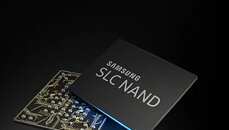
Micron Announces Business Unit Reorganization to Capitalize on AI Growth Across All Market Segments
Micron Technology, Inc. (Nasdaq: MU), a leader in innovative memory and storage solutions, today announced a market segment-based reorganization of its business units to capitalize on the transformative growth driven by AI, from data centers to edge devices.
Micron has maintained multiple generations of industry leadership in DRAM and NAND technology and has the strongest competitive positioning in its history. Micron's industry-leading product portfolio, combined with world-class manufacturing execution enables the development of differentiated solutions for its customers across end markets. As high-performance memory and storage become increasingly vital to drive the growth of AI, this Business Unit reorganization will allow Micron to stay at the forefront of innovation in each market segment through deeper customer engagement to address the dynamic needs of the industry.
Micron has maintained multiple generations of industry leadership in DRAM and NAND technology and has the strongest competitive positioning in its history. Micron's industry-leading product portfolio, combined with world-class manufacturing execution enables the development of differentiated solutions for its customers across end markets. As high-performance memory and storage become increasingly vital to drive the growth of AI, this Business Unit reorganization will allow Micron to stay at the forefront of innovation in each market segment through deeper customer engagement to address the dynamic needs of the industry.






















































